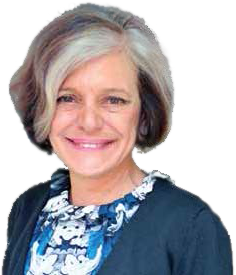Making Your Students' Learning Visible: How Can We Know What They Know?

Our major educational mission is to ensure our students learn, so measuring their learning is central to scholarly teaching. We can define learning in terms of how well students achieve the learning outcomes of a course. These outcomes represent the skills that students should be able to demonstrate in some visible, observable performances by the end of the course. These outcomes should also inform the faculty’s choice of teaching methods, as some methods are more effective than others for helping students achieve given outcomes. How well students achieve the outcomes provides the most solid basis not only for grading/marking but also for measuring learning.
This keynote invites you to examine, evaluate, and select from among various test formats and student survey instruments that have been used to measure student learning at the course level. Even in large classes, faculty can quite easily collect the data for these measurements -- whether direct, indirect, end-of-course-only, or pre- and post-test -- and reduce them to quantitative data for easy analysis. By the end of the session, you will be able to assemble evidence of your students’ learning in your courses in several ways. You can use this evidence to complement your student ratings in your faculty reviews or to assess the impact of various course variables on learning.
Biography
Linda B. Nilson is founding director of the Office of Teaching Effectiveness and Innovation (OTEI) at Clemson University and author of Teaching at Its Best: A Research-Based Resource for College Instructors, now in its third edition (Jossey-Bass, 2010; fourth edition in planning stages), The Graphic Syllabus and the Outcomes Map: Communicating Your Course (Jossey-Bass, 2007), Creating Self-Regulated Learners: Strategies to Strengthen Students’ Self-Awareness and Learning Skills (Stylus, 2013) and Specifications Grading: Restoring Rigor, Motivating Students, and Saving Faculty Time (Stylus, 2015). She also co-edited Enhancing Learning with Laptops in the Classroom (Jossey-Bass, 2005) and Volumes 25 through 28 of To Improve the Academy: Resources for Faculty, Instructional, and Organizational Development (Anker, 2007, 2008; Jossey-Bass, 2009, 2010). To Improve the Academy is the major publication of the Professional and Organizational Development (POD) Network in Higher Education.
Dr. Nilson’s career as a full-time faculty development director spans 25 years. In this time, she has published many articles and book chapters and has given well over 500 keynotes, webinars, and live workshops at conferences, colleges, and universities both nationally and internationally. She has spoken on dozens of topics related to course design, best teaching practices, assessment, scholarly productivity, and academic career matters. In her recent articles, she documents the instability of faculty development careers, raises serious questions about the validity of student ratings, and describes instructor-friendly ways to measure learning at the course level.
Before coming to Clemson University, Dr. Nilson directed teaching centers at Vanderbilt University and the University of California, Riverside. She has also taught graduate seminars on college teaching. She entered the area of educational development while she was on the sociology faculty at UCLA. After distinguishing herself as an excellent instructor, her department selected her to establish and supervise its Teaching Assistant Training Program. In sociology, her research focused on occupations and work, social stratification, political sociology, and disaster behavior.
Dr. Nilson has held leadership positions in the POD Network, Toastmasters International, Mensa, and the Southern Regional Faculty and Instructional Development Consortium. She was a National Science Foundation Fellow at the University of Wisconsin, Madison, where she received her Ph.D. and M.S. degrees in sociology. She completed her undergraduate work in three years at the University of California, Berkeley, where she was elected to Phi Beta Kappa.